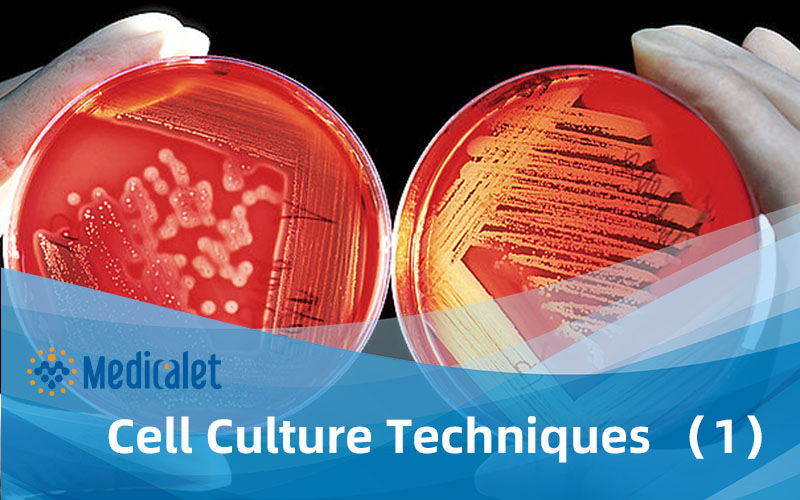
Cell Culture Techniques
There are many different techniques that are used in cell culturing. Some are used to directly culture or freeze cells, others are used to authenticate cell lines and check for cross-contamination between cell lines. Below are some brief summaries of some of the more common techniques.
Subculturing
After they are grown in culture for a few days, cells can become too crowded for their container and this can be detrimental to their growth, generally leading to cell death if left for long periods of time as they will use up the nutrients over time . A common solution to this is to subculture the cells into another container. What this involves is simply taking a portion of the cells from one container and moving them to a new container with fresh media, thus providing more space and nutrients for both portions of cells to grow .
If the cells are suspension cells, they can simply be transferred into a conical tube, spun down in a centrifuge, and then re-suspended in fresh media. This suspension can be divided into 2 or more portions and added to new containers. However, if the cells are adherent cells, they must first be detached from their container . Trypsin is a common proteolytic enzyme which breaks down proteins that help cells adhere to culture vessels. Therefore, trypsinization, the process of cell dissociation using trypsin, is used to passage cells into a new vessel .
Other dissociation enzymes such as dispase or collagenase, both of which are gentler than trypsin, can also be used for digestion. Prolonged exposure to trypsin can damage the proteins on the cell’s surface and thereby affecting subsequent cell attachment and cell functioning. Therefore, trypsin must be diluted and inactivated after most cells are detached from the culture vessel. Inactivation is commonly achieved by the addition of serum and divalent cations calcium and magnesium (often in the form of serum-containing media). In cases where serum-free conditions are used to culture cells, soybean trypsin inhibitor can be added to prevent further tryptic activity. After the cells are freed from the culture vessels, the cells can then be transferred to a conical tube, spun down, and then portioned into new containers using fresh media .
Seeding Density
One important factor to keep in mind when subculturing cells is the seeding density, which is the number of cells being added into a culture vessel. Some cell lines prefer high seeding densities while others are able to proliferate well even under low densities. Some will even change their characteristics depending on the seeding density. For example, granulosa cells in culture will secrete estradiol at lower densities but will gradually transition to secreting more progesterone as the density increases . If the cells are known to grow fast or if the cells will be cultured for a longer period of time, larger culture vessels should be used.
Propagation, Population Doubling and Passage Number
Another important factor to keep in mind is the phase of proliferation that the cells are in. There are four phases: lag, log, stationary and decline . During the lag phase, the number of cells is not increasing and the cells are simply acquiring enough resources to prepare for proliferation . During the log phase, the cells begin to proliferate and do so faster and faster over time. At the stationary phase, the rate of proliferation plateaus off and maintains a constant rate, due to the lack of nutrients and the presence of toxic metabolic waste products . Finally, when the cells reach the decline phase they begin to die off due to a lack of nutrients, altered pH conditions and the accumulation of toxic waste products . Cells should be seeded when they are in the lag phase so they can enter the log phase whilst in their new media . Generally they are frozen while in the log phase .
Population doubling in cell culture is simply the time it takes for a cell population to double. Another related term is the population doubling level, which is used to describe the total number of times the cells in a culture have doubled since they were first grown in vitro . A common formula used to calculate the population doubling level is :
Population Doubling Level=Log10(NN0)×3.33
Where N is the number of cells in the culture vessel at the end of a certain time interval, and No is the original number of cells plated in the vessel.
Population doubling and passage number are often mixed up or thought to mean the same thing. The passage number actually describes the number of times that a culture has been subcultured . In contrasts with the population doubling level in that the specific number of cells involved is not relevant. It simply gives a general indication of how old the cells may be and how suitable they would be for various assays .
